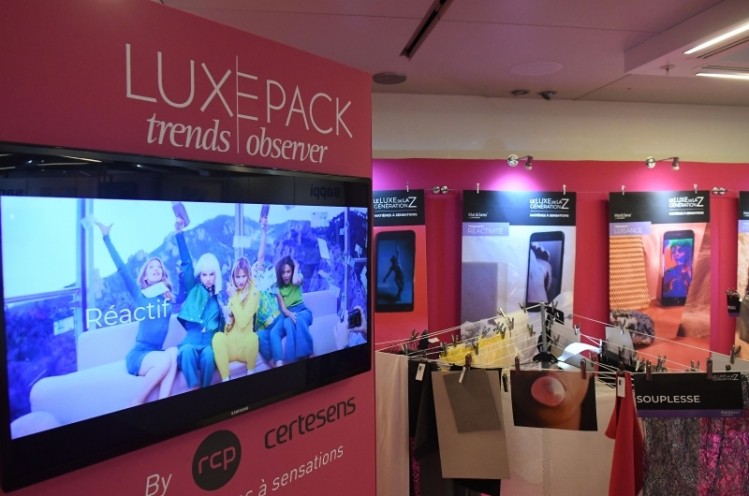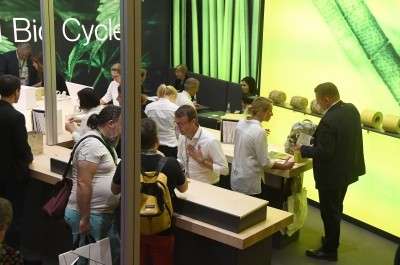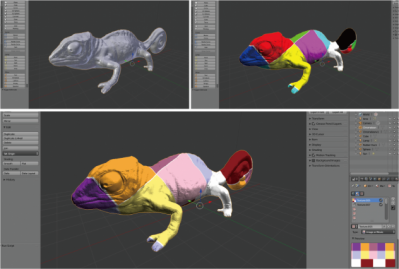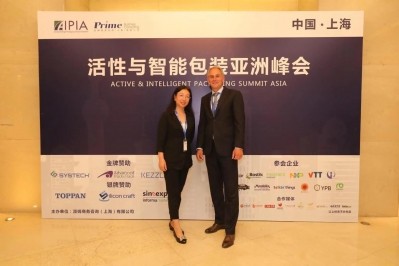LUXEPACK MONACO 2019
‘We have to turn consumers into brand ambassadors & integrate them as part of the brand’

How brands stay ahead in a time of digitally savvy Chinese consumers was the focus of Langer’s seminar at LuxePack Monaco last week (September 30-October 2).
Consumption patterns
“China is the periscope into the future because it is a precursor to what we will see in other markets in the next couple of years, it also shows us why are people paying a premium to indulge themselves in luxury brands, where there has otherwise been no research to show what drives this,” he said.
He added, we are living in a world of massive disruption, which is good news for agile companies, but bad news for companies that are not agile.
“There has been an accelerating growth in technology. Years’ ago people had a lower life expectancy and the only innovation was the telescope. We are already in very different times with things accelerating and a lot of inventions come into being in our lifetime,” said Langer.
“A lot of my clients still believe their clients are in their 40s and 50s but Gen Z is below 20. Someone who is younger than 25 will not follow the same trends as someone older than them. A young person would never buy something their mother has bought.”
According to Langer, 17% of consumers are above 40 years old in China whereas 55% of consumers are over 40 in the rest of the world. In China ‘luxury’ is a female dominant market.
“We see strong changing consumption patterns in younger people directed towards personalization. ‘Selfies’ were 10 years ago, but now the younger generation curate Instagram feeds influencing how other consumers see themselves,” he said.
“In Tokyo, there are stores where you can rent sneakers (sports trainers) by the hour because they want people to take a photo with them, to be associated with the brand and post it on social media.
“People want to have experiences that are unforgettable and people are willing to pay more for a better experience. Being conscious about sustainability is trending but it is not a decisive topic. People don’t choose to buy something based on sustainability first, but, it is becoming more important.
“People want to know the decisions they take are good decisions, and they are more connected to what is going on which means behavioural patterns change very fast.”
'Influencers'
Langer said 10 years ago, publications such as Vogue told us how to dress. There were few ‘authoritative magazines’ at that time but now we have ‘influencers’, where almost everyone can become an authority. This has several consequences on society and we see more variety of expressions. They are not experts so to speak, but this means unexpected, unpredictable things can happen.
“In China consumers trust people more than brands, they rely on ‘key opinion leaders’ because they need a connection to someone who is known and famous to be relevant,” he added.
“Brands are changing the way they present themselves to consumers and how they are selling, such as stores that having no shelving, playful interaction instore with a brand, pop-up experiences, retail spaces are becoming ‘store telling spaces’.
“The same is happening in Korea, where they are launching fast-changing, interactive ‘Instagrammable’ retail spaces. Consumers can order products instore via a digital tool like an iPad (Glossier makeup brand for example) where they personalize the bag instore and it arrives via a lift.
“The brand doesn’t need to do any advertising because the consumers are promoting their products by filming it and putting it on Instagram. the experiential component is becoming very important. its like an Apple store for beauty care. The classic way of selling jewellery was behind glass, but those types of ways of selling are over.”
Langer added, companies need to think about how to create more sustainable business models, without forgetting the core competency as consumers get more connected because they want things faster and they are more demanding.
He said: ‘although we know more, sometimes we know less’, because we don’t know what is going on all the time. In five minutes everything changes around us, and vulnerability is something people feel much more than before.
Digital infrastructure
In times like this, Langer said brands can do three things; refocus on the brand because in times of uncertainty brands become more important.
Create a digital infrastructure because without it brands will not exist and create a brand community.
“We have to turn our consumers into ambassadors of the brand and integrate them as part of our brand,” he said.
“Building the brand is the most important task then everything else is the delivery system and the service consumers experience. If we go to buy something and we don’t feel that the brand is talking to us we already know there is something wrong. A total of 99% experiences are category experiences and not brand experiences.
“What is driving people to spend money on luxury? They are not buying it for the product, but for the value the brand creates, this is why building a brand and its story is so important. If it’s just a logo, it’s a trademark with no life, the story has to be inside driven, differentiating it from other brands and to be authentic and relevant. If people feel there is a disconnect between what the brand says and does people will not believe in the brand.”
According to Langer, people now believe the larger brands are not connected to them in what they are saying. He said there has to be an instant rational and emotional payout. If not, people will not see it as authentic.
“We have to translate what we do to the consumers. What we are selling to the consumer and how do we inspire them - what is the feeling we are creating?,” he said.
“It has to be consistent along the entire customer journey, if it happens everywhere it will not be a branded journey and creates a red flag for the consumer.
“Companies have to become data companies right now. Data doesn’t mean you can’t be creative but you know what is going on and what your consumers want and the life of your consumers. If you don’t know that how can you create something that is relevant for them.”
Higher expectations
He said Chinese consumers are different in the way they perceive brands compared to other countries. They have higher expectations.
“Most brand manufacturers are underestimating the Chinese consumer and see them as a mass market looking from a Western standpoint. They are more technology driven, they don’t use bank cards anymore but a Paypal-type app system on their phone,” Langers added.
“They pay beggars on the street with apps and not money. The words they use to advertise a product are shorter with at most eight characters. In China people want to understand first the story behind the brand.
“Most Western companies are losing money in China. Their thinking is ‘too European or American’. They need to do the basics. They want the human connection even if that is digital, a one-to-one conversation. Most companies are not making this distinction.
“A gut feeling is not enough anymore. To target young digital consumers in the future it is not enough to act on what we believe is true we need a data-driven solution instead of gut-driven.
“People are not using enough of a data-driven approach to understand their consumers. We have to turn away from one-way messaging and think about how we can make consumers a part of our brand story and create more value for them.”












